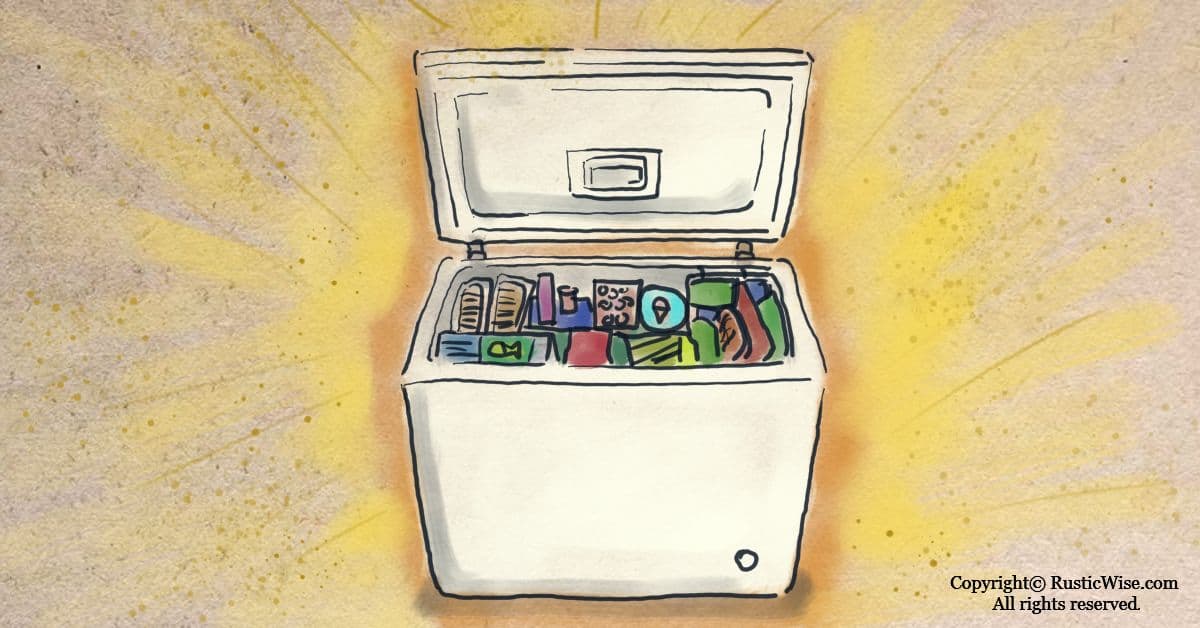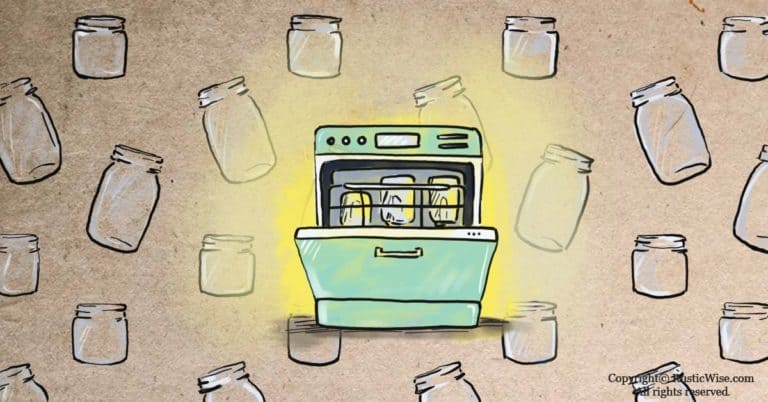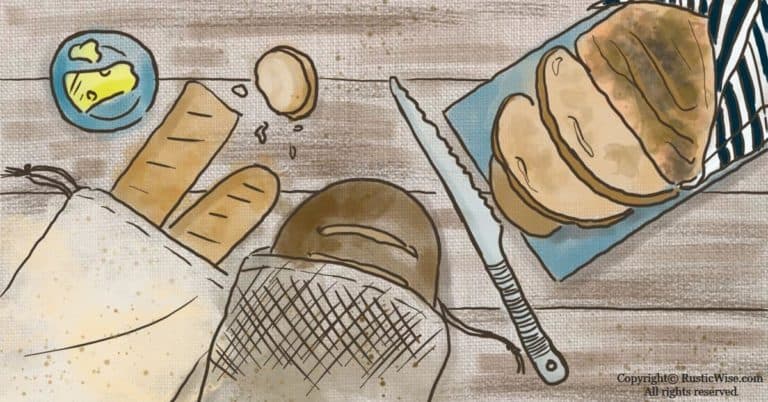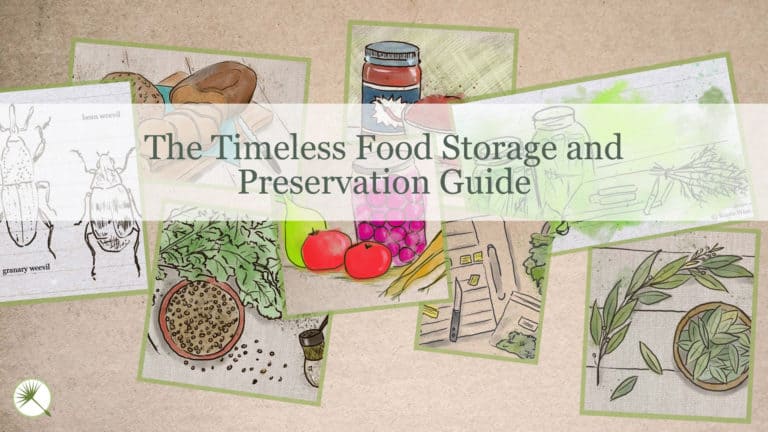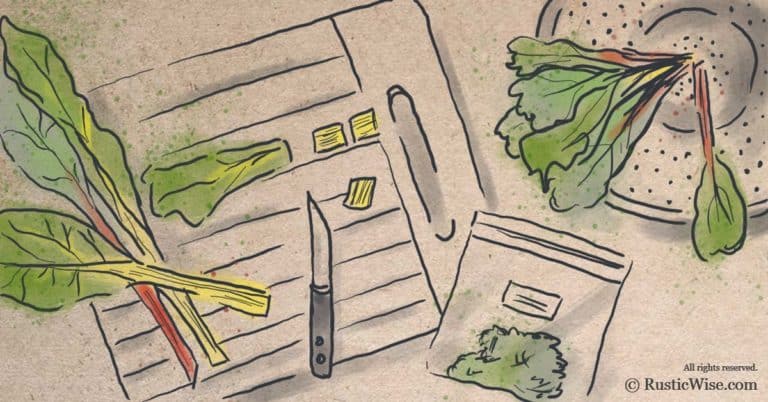Can a Freezer Be Too Full?
While a freezer full of food doesn’t sound like a bad thing, can a freezer be too full? Yes, there is such a thing as too full. On the flip side, being too empty isn’t efficient either. The sweet spot is having a freezer that’s around 70-85 percent full. This allows air to properly circulate while also maximizing energy efficiency.
When a freezer is too full (you have trouble closing the door, or it’s stuffed to the max), it works harder to keep foods cool as there is poor air circulation, and possible blocking of vents. This leads to the condenser working overtime.
Ideally, a freezer would be mostly full with enough room for cold air to circulate around the top and sides. Remember to allow for air circulation around the outside of the appliance as well. Leave at least one-inch from the back and several inches on top of the freezer.
If you find yourself with too much food in your freezer, it’s time to defrost and use up some of that food!
Why your freezer should be full (but not too full)
One of the most common freezer mistakes is keeping it too full, or too empty.
When your freezer is too full, there’s poor freezer air circulation. A jam-packed freezer doesn’t allow cold air to reach all of the food—some foods that are closer to the cooling elements get too cold, while others that are further away get too warm. Cold air also doesn’t reach the thermostat properly, giving the freezer an inaccurate temperature reading. Your freezer ends up working harder to keep food cool.
When your freezer compartment is too empty, there’s a lot of air that needs to constantly be kept cool. This requires more energy usage.
In a nutshell, everytime you open the freezer door, warm air enters while cold air escapes. It’s more energy-efficient to keep a freezer full of food that’s already frozen, than to keep a large, cavernous air space cooled to a set temperature.

Benefits of having a full freezer
Besides having a stockpile of food, here are some other benefits of having a packed freezer.
- Frozen foods act as a buffer for temperature changes: Every time the freezer door is opened, the freezer expends more energy keeping it cool. A freezer compartment full of already frozen food helps mitigate heat loss and temperature fluctuations.
- Better food safety when freezing foods: When placing new (unfrozen foods) into a freezer, having a batch of already frozen foods speeds up freeze times for new foods, leading to improved food safety.
- Food keeps better in case of a power outage: This point concerns food safety and potential food wastage. In case you have a power outage, a packed freezer with frozen foods retains its cold temperature more effectively than an empty one. The USDA says:
“A freezer full of food will usually keep about 2 days if the door is kept shut; a half-full freezer will last about a day. The freezing compartment in a refrigerator may not keep foods frozen as long. If the freezer is not full, quickly group packages together so they will retain the cold more effectively. Separate meat and poultry items from other foods so if they begin to thaw, their juices won’t drip onto other foods.”
—USDA
Ideal temperature for your freezer
The USDA’s food safety guidelines say that your freezer should be kept at 0 degrees Fahrenheit (-17.8 degrees Celsius) or lower. Food kept at this temperature keeps indefinitely in theory, although that doesn’t mean you want to eat a pack of frozen steaks that’s say, 10 years old.
When it comes to long term food storage, the colder, the better. Crank that freezer dial to the lowest possible setting.
General freezer storage times for frozen foods
In an ideal world, there would be no food wastage. If your freezer is stuffed with too much food, consider using older foods first along with frozen foods with a shorter shelf life.
Here’s a general food storage time for frozen foods courtesy of FoodSafety.gov.
| Food | Freezer (0 °F or below) |
|---|---|
| Hot dogs | 1 to 2 months |
| Luncheon meat | 1 to 2 months |
| Hamburger and other ground meats | 3 to 4 months |
| Fresh beef, veal, lamb, and pork | 4 to 12 months |
| Ham (Fresh, uncured, uncooked) | 6 months |
| Bacon | 1 month |
| Fresh Poultry | 9 months to 1 year |
| Soups & Stews | 2 to 3 months |
Can a freezer be too full: tips on getting the most out of your freezer
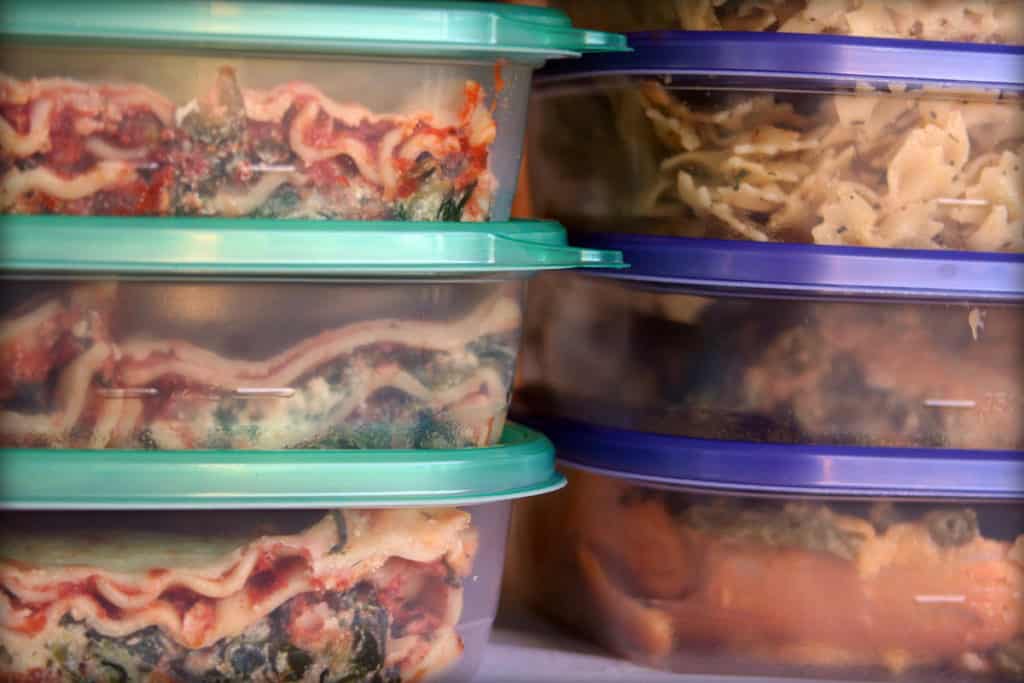
Here’s a few tips on improving the all-around efficiency of your freezer:
- Avoid leaving the door open for too long: You know this already, but it’s best to note that every time you open the door to retrieve an item or two leads to loss of cool air. If you’re spending more than a minute getting food out, you could probably benefit from better organization which leads us to the next point…
- Group similar foods together: Okay, reorganizing your freezer takes some time, but it’s worth it if you find yourself digging through layers of frozen food to find what you’re looking for. Start by consolidating similar foods together such as meat, vegetables, fruits, and bread. Designate a certain area or shelf within your freezer for each group. Group them together in bags or bins. The next time you open your freezer, you’ll at least know the general vicinity of where an item should be located.
- Place older foods to the front (or top): It’s easy to forget about a pack of old ground beef if it’s sitting at the back or bottom of your freezer. Place foods that need to be used first in a convenient area.
- Label foods: It’s a no-brainer. Remember to clearly label and date each food item. Sometimes one frozen mass of food is hard to distinguish from another.
- Avoid freezer burn: Freezer burn is a result of improperly wrapped food. Ensure all air is squeezed out of ziploc bags. If you’re using a storage container, remember to leave a bit of room for food expansion. Keep all foods in airtight containers. If you do happen to have a bit of freezer burn, no worries. Just cut away the portion of food that has freezer burn on it—the rest is still safe to eat.
The best place to store ice cream: If you have a deep freezer, store ice cream near the top to prevent it from getting too hard to scoop. If you store ice cream in the kitchen freezer, avoid storing ice cream on the door. The door is the warmest part of the freezer and is subject to temperature fluctuations. This explains why ice cream stored on the door sometimes has a funky texture.

Author: Josh Tesolin
Josh is co-founder of RusticWise. When he’s not tinkering in the garden, or fixing something around the house, you can find him working on a vast array of random side projects.

